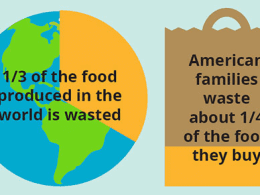In the early 1980s, the world witnessed the emergence of a new disease that was initially identified among gay men in the United States. The disease was later named acquired immune deficiency syndrome (AIDS), and it quickly became a global epidemic. The AIDS crisis was accompanied by widespread panic, fear, and stigma. The disease was not well understood, and many myths and misconceptions about AIDS circulated in the media and public discourse.
Today, more than 40 years since the emergence of AIDS, much has changed in our understanding of the disease. Significant advancements have been made in medical research, and effective treatments and prevention methods are now available. However, stigma and discrimination against people living with HIV/AIDS continue to persist. In this article, we will explore the myths and realities of AIDS and the impact of stigma on those living with the disease.
Myth: AIDS only affects gay men and drug users.
One of the most persistent and harmful myths about AIDS is that it only affects gay men and drug users. While it is true that these groups were initially the most affected by the disease, AIDS can affect anyone regardless of their sexual orientation or drug use. According to the World Health Organization (WHO), women account for more than half of all people living with HIV/AIDS globally. Moreover, the disease is prevalent in both urban and rural areas and affects people of all ages and socio-economic backgrounds.
Myth: AIDS can be transmitted through casual contact.
Another common myth about AIDS is that it can be transmitted through casual contact, such as sharing food, drinks, or utensils, or through hugs, handshakes, or toilet seats. This is not true. HIV, the virus that causes AIDS, is primarily transmitted through blood, semen, vaginal fluids, and breast milk. Therefore, it can be transmitted through sexual contact, sharing of needles and syringes, and from mother to child during pregnancy, childbirth, or breastfeeding. However, HIV cannot be transmitted through saliva, sweat, tears, or urine.
Myth: AIDS is a death sentence.
In the early years of the AIDS epidemic, AIDS was often considered a death sentence. However, with the development of antiretroviral therapy (ART), people living with HIV/AIDS can now lead long and healthy lives. ART works by reducing the amount of virus in the body to undetectable levels, which not only improves the health of people living with HIV/AIDS but also reduces the risk of transmission. Moreover, pre-exposure prophylaxis (PrEP) and post-exposure prophylaxis (PEP) are now available as effective prevention methods.
Myth: People living with AIDS are to blame for their condition.
Stigma and discrimination against people living with HIV/AIDS are often rooted in the belief that they are to blame for their condition. This blame can take many forms, including the belief that people living with HIV/AIDS are promiscuous, immoral, or irresponsible. However, the reality is that anyone can contract HIV, and many people living with the disease contracted it through no fault of their own. Furthermore, stigma and discrimination only serve to worsen the impact of the disease and hinder efforts to prevent its spread.
In conclusion, breaking the stigma surrounding AIDS requires accurate information and education. The myths and misconceptions surrounding AIDS continue to fuel stigma and discrimination against those living with the disease. However, by understanding the facts and realities of AIDS, we can promote empathy, compassion, and support for those living with the disease.












